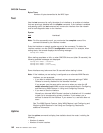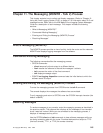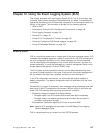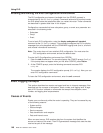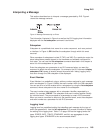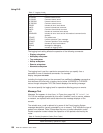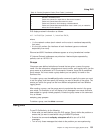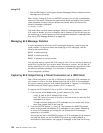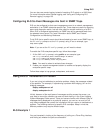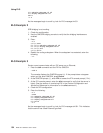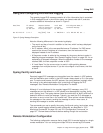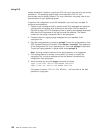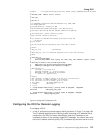
Table 17. Logging Levels
Logging Level Type
UI ERROR Unusual internal errors
CI ERROR Common internal errors
UE ERROR Unusual external errors
CE ERROR Common external errors
ERROR Includes all error levels above
UINFO Unusual informational comment
CINFO Common informational comment
INFO Includes all comment levels above
STANDARD Includes all error levels and all informational comment levels
(default)
PTRACE Per packet trace
UTRACE Unusual operation Trace message
CTRACE Common operation Trace message
TRACE Includes all trace levels above
DEBUG Message for debugging
ALL Includes all logging levels
The logging level setting affects the operation of the following commands:
v Display subsystem
v Nodisplay subsystem
v Trap subsystem
v Notrap subsystem
v Remote subsystem
v Noremote subsystem
The logging level is set for a particular command when you specify it as a
parameter to one of the above commands. For example:
display subsystem TKR ERROR
Including the logging level on the command line modifies the display command so
that whenever an event with a logging level of either UI-ERROR or CI-ERROR
occurs through subsystem TKR, the console displays the resulting message.
You cannot specify the logging level for operations affecting groups or events.
Message Text
Message Text
appears in short form. In Figure 4 on page 149, Slf tst nt 1 int
ETH/0 is the message generated by this event. Variables, such as
source_address
or
network
, are replaced with actual data when the message displays on the
console.
The variable
error_code
is referred to by some of the Event Logging System
message descriptions (usually preceded by rsn or reason). They indicate the type of
packet error detected. Table 18 describes the error or packet completion codes.
Packet completion codes indicate the disposition of the packets received by the
router.
Table 18. Packet Completion Codes (Error Codes)
Code Meaning
0 Packet successfully queued for output
Using ELS
150
MRS V3.2 Software User’s Guide



